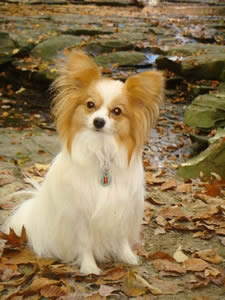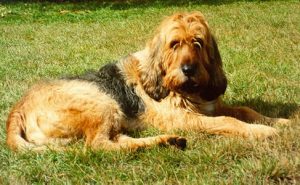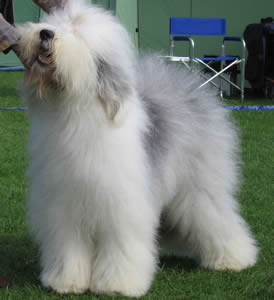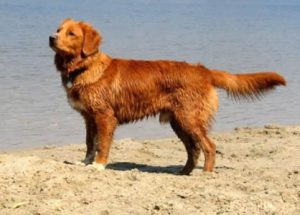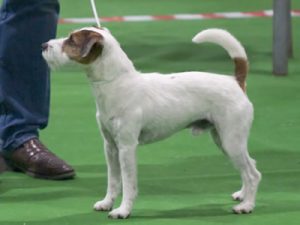
The Parson Russell Terrier was recognised by the UK Kennel Club in 1990, followed by Australia and FCI countries, then American Kennel Club in 2001, as Parson Jack Russell Terrier and then in the USA as the Parson Russell Terrier. Because the name “Jack Russell Terrier” was trade-marked in the USA by a group of people who did not wish to become a part of an all-breed kennel club, the Kennel Clubs of the world had to “re-badge” their terrier. The name was changed to “Parson Russell” Terrier for the American Kennel Club because of a compromise with the Jack Russell Terrier Club of America. The rest of the world now recognises the Jack Russell and the Parson Russell as 2 separate breeds.
The Parson Russell Terrier is descended from early primarily white-bodied foxing terriers used in the hunt field. At the end of the 19th Century, these dogs were drawn into the Kennel Club as “fox terriers,” but their still-working antecedents were referred to as “Jack Russell” terriers throughout the 20th Century in honour of the Rev. John “Jack” Russell, a noted fox hunter of the 19th Century “The Sporting Parson” who is credited with creating the breed.
Breed Standard
The ideal height of a mature dog is 14” at the highest point of the shoulder blade, and bitches 13”. The weight of a terrier in hard working condition is usually between 13-17 lb. The terrier should appear balanced and proportionate with the height at withers is slightly greater than the distance from the withers to tail. These terries have medium bone, which is not so heavy as to appear coarse or so light as to appear racy. The head is to be proportionate with the body with small V-shaped drop ears and a full pigmented black nose. The bite should be a scissor bite with the top set of teeth very slightly overlapping the bottom. The coat can be smooth or broken, consisting of a double coat which is naturally harsh, close and dense, straight with no suggestion of kink. There is a clear outline with only a hint of eyebrows and beard if natural to the coat. This terrier is intended to be shown in his natural appearance and not excessively groomed. Their colour is predominantly white with black or tan markings, or a combination of these. Colours are clear but grizzle is acceptable and should not be confused with brindle (which would disqualify the terrier).
Temperament
The Parson is a bold and energetic happy go lucky terrier. They often do well with people who possess those same attributes as well as patience and a sense of humour. Parsons can do very well with children, but many Parsons won’t tolerate being handled roughly, so it is not recommended that they be placed in homes with very young children. Parsons do not do well in flats or apartments because of their high exercise requirements. Because the Parson was bred to hunt, it can be difficult for them to live with some pets such as small rodents. While, they will get along fine with cats if raised with them, it’s not suggested to leave them alone together unsupervised. They are very intelligent and eager to please. Many excel in activities such as obedience, agility, conformation and earthdog.
—————————————————————————————————————–
CARING FOR YOUR DOG NEWSLETTER – Delivered Directly To Your Inbox – Starting Immediately – SIGN UP FOR FREE TODAY
—————————————————————————————————————–

